We traveled with 7 lady friends. Our trip with Asia Odyssey Travel was so well planned, and seamless. Our time in Bhutan was exceptional, being led by Ugyan and Doji. What two very wonderful men. They were both so very knowledgeable, kind, and helpful. I cannot say enough good about our time in Bhutan with these two good men,...our guide and driver. Thank you Asia OdysseyTravel!!! p.s. Our trip was planned by Tony of Asia Odyssey. He was amazingly helpful, and planned our trip flawlessly! Thank you, Tony!
4 Days Singapore Package Tour from Manila (Visa-free Tour)
- Highlights
- Itinerary
- Price
- Trip Notes
- Accommodation
- Photos
- Reviews
Philippines to Singapore: Visa-Free 4-Day Tour Package
Good News for Filipino Travelers to Singapore! You can enjoy visa-free entry to Singapore - so let’s have fun without restrictions! With direct daily flights from Manila to Singapore, the journey takes only about 3.5 to 4 hours. It’s quick, easy, and perfect for a getaway.
You’ll fly from the Philippines, a country of countless islands and beaches, to Singapore, a small yet vibrant nation famously known as a "Garden City." The adventure begins the moment you land at Changi Airport, where you’ll be amazed by the world’s tallest indoor waterfall, the HSBC Rain Vortex. From there, you’ll experience Singapore’s dynamic and futuristic skyline, featuring iconic landmarks like Marina Bay Sands and other architectural marvels.
You’ll also appreciate Singapore’s clean streets, fresh air, and its lush parks and vertical gardens, such as the breathtaking Gardens by the Bay. As part of a 4-day Singapore tour package, you can immerse yourself in the city’s melting pot of cultures. Explore neighborhoods like Chinatown, Kampong Glam, and Little India to experience the rich traditions of Chinese, Malay, Indian, and Peranakan cultures.
When it comes to food, leave behind the seafood you’re used to in the Philippines and indulge in Singapore’s culinary delights. Treat yourself to dishes like Hainanese chicken rice, chili crab, laksa, and kaya toast - even better if you enjoy them at one of Singapore’s Michelin-starred restaurants or iconic hawker centers.
For fun and adventure, head to Sentosa Island, where attractions like Universal Studios Singapore await. This trip offers a stark contrast between the lush tropical beauty of the Philippines and the vibrant, modern charm of Singapore - a journey you’ll never forget!


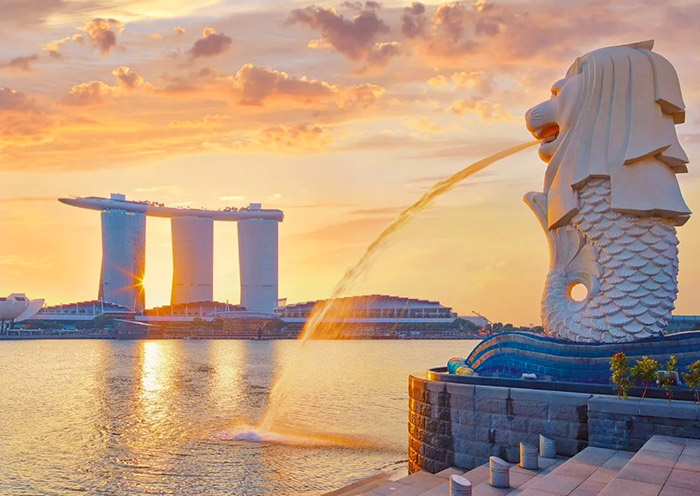
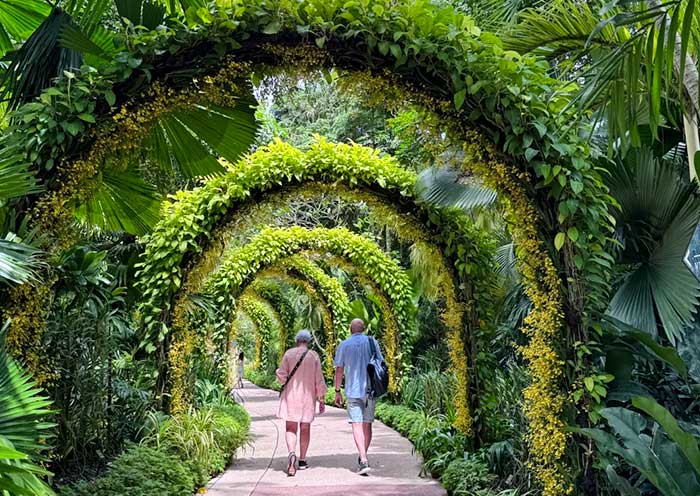


Itinerary at a Glance
Manila (0.5 Day)
Singapore City (3.5 Days)
Gardens by the Bay (Cloud Forest & Flower Dome), Kampong Glam, Merlion Park, Thian Hock Keng Temple, Singapore Botanic Gardens (World Heritage; National Orchid Garden), Universal Studios Singapore, S.E.A. Aquarium
Itinerary Day by Day
This morning, you will head to Ninoy Aquino International Airport (NAIA) in Manila on your own for your direct flight to Singapore (about 3.5–4 hours).
Welcome to Singapore, the second smallest country in Asia (only larger than the Maldives)! Singapore is a unique city-state island nation where the city is the country and the capital itself. (P.S.: Singapore is about half the size of London and slightly larger than New York City.)
Upon arrival at Singapore Changi Airport, our local driver and guide will meet you at the airport. Then, you will head to Gardens by the Bay (Cloud Forest & Flower Dome). Explore Singapore with Asia Odyssey Travel and discover why Singapore is known for being safe, clean, diverse, and rich. (Note: Hotel check-in time is 3 PM.)
At Gardens by the Bay, immerse yourself in a fusion of nature and technology in the "City of the Future." Gardens by the Bay is a key part of Singapore's transformation into a "Garden City." It features two plant conservatories, multiple themed gardens, and a large outdoor landscape area. During the day, escape the heat by exploring the two indoor wonders: the Cloud Forest and Flower Dome (bring a coat if you're sensitive to the cold).
Step into a world of wonder at Gardens by the Bay! A must-visit destination for nature lovers, photographers, and dreamers. At Flower Dome, marvel at the world’s largest glass greenhouse - a perpetual springtime paradise with over 30,000 exotic flowers and plants from five continents. At Cloud Forest, wander through misty mountain landscapes, home to orchids, ferns, and pitcher plants, and be awed by a stunning 35-meter indoor waterfall. At Supertree Grove, discover futuristic vertical gardens - 18 towering supertrees (25 to 50 meters tall) adorned with 150,000 plants spanning 200 species. Afterward, head back to your hotel.
Notes for Gardens by the Bay:
- Gardens by the Bay is relatively large.If you are traveling with elderly people or children, consider purchasing a combined ticket that includes the shuttle bus. Beware of mosquitoes.
- Self-pay for tickets not mentioned, such as Supertree Observatory, OCBC Skyway, or Floral Fantasy.
- Satay by the Bay: Enjoy a variety of local Singaporean delicacies here, including satay, Hainanese chicken rice, and chili crab, all at very affordable prices.
Free Time Ideas in Singapore:
- Light Show at Supertree Grove(Free): As night falls, be captivated by the enchanting light show at Supertree Grove, starting at 7:45 PM and 8:45 PM. It will transport you into a futuristic, Avatar-like realm. Locals highly recommend experiencing this spectacle both during the day and at night to fully appreciate its magic.
- Clarke Quay (Bumboat): A must-visit spot for nightlife, colorful shophouses, Singaporean food, and even the chance to spot wild otters. Take a Singapore River Cruise(self-pay) for panoramic views of the Singapore skyline, including Marina Bay Sands, the Merlion, and the Esplanade. (Choose Boat Quay if you prefer a quieter dining experience with scenic river views and historical charm.)
- Raffles Hotel: Visit the Long Barat Raffles Hotel for a glass of the iconic Singapore Sling (a world-famous cocktail and the national drink of Singapore). This is a bucket-list experience! Opened in 1887, this colonial icon has hosted famous figures such as Charlie Chaplin, Elizabeth Taylor, and royalty. The hotel offers a glimpse into Singapore’s rich history.
After the tour, you will be escorted to your hotel, conveniently located in Singapore.
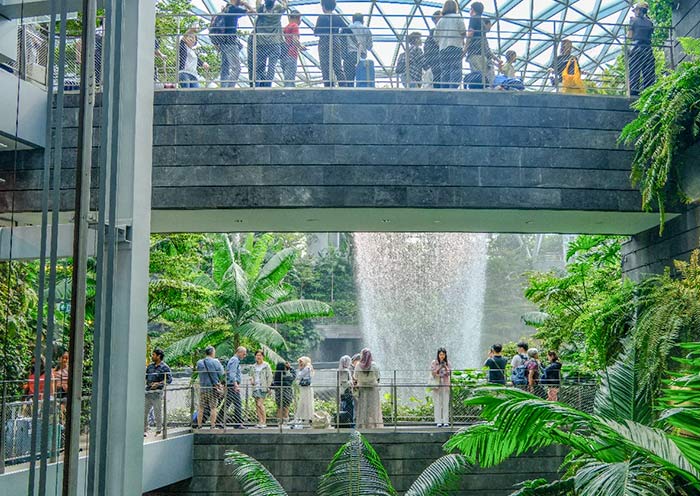
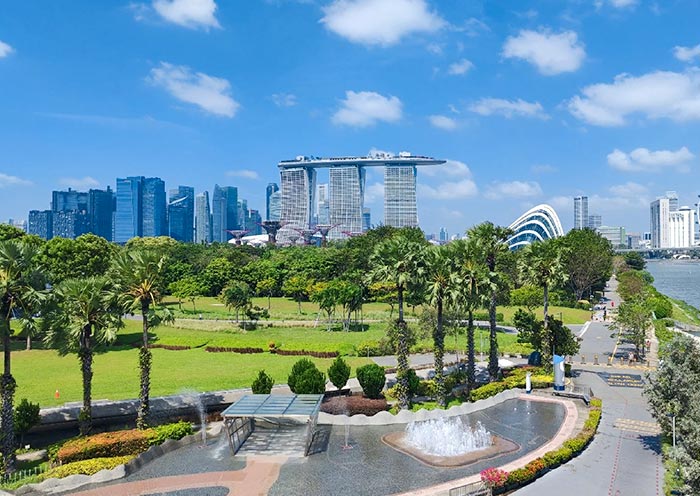
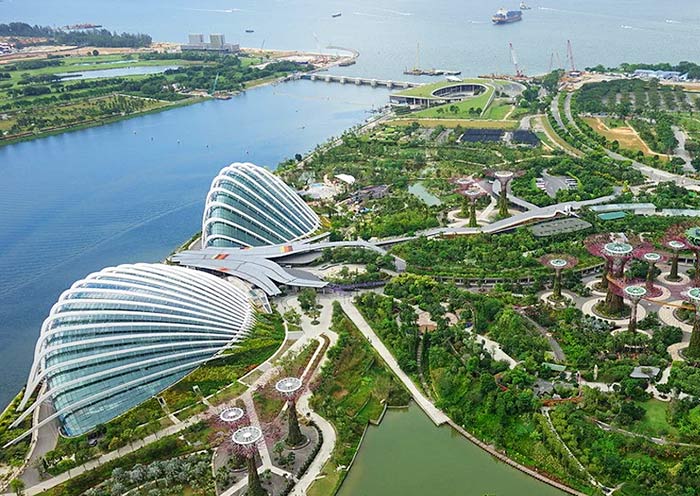
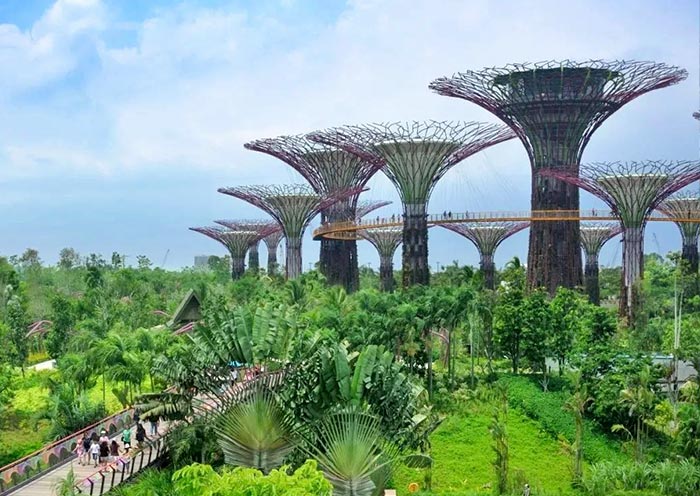
After breakfast, let’s discover the Highlights of Singapore City. Wander through the colorful Kampong Glam (Muslim Culture), rich in Malay and Arab heritage. At Merlion Park, capture iconic waterfront views of the Lion City. Admire the intricate architecture of Thian Hock Keng Temple (Taoist Culture), a place to worship Mazu, the Chinese sea goddess. Visit the Singapore Botanic Gardens, a green sanctuary in the heart of Singapore’s urban landscape.
First, head to Kampong Glam, an excellent place to explore Muslim and Malay Culture. As one of the oldest streets in Singapore, this area used to be the center of activities for the Malay Royal Family and retains many historical buildings and cultural attractions, such as the Sultan Mosque, Arab Street, and Haji Lane.
Kampong Glam was a seaside village 200 years ago. In Malay, "Kampong" means "village." The village was named after the gelam trees, which once grew there and were used for shipbuilding and medicine. During Singapore's colonial era, Sir Stamford Raffles designated this area for the Malay, Arab, and Bugis communities in 1822. Today, its 19th-century shophouses host textile shops and diverse restaurants.
The Sultan Mosque is the landmark of Kampong Glam, known for its huge golden dome and towering minaret. Its architectural style is a fusion of Malay, Indian, and Mughal influences, epitomizing Singapore's multiculturalism. Built in 1824 by Sultan Hussein Shah, the Sultan of Johor, it can now accommodate up to 5,000 worshippers at the same time. (Note: To enter the mosque, wear long pants and sleeves out of respect.)
When visiting Kampong Glam, don’t miss Haji Lane, famous for its striking murals and graffiti created by local artists such as Yip Yew Chong (叶耀宗). Haji Lane is a photographer's paradise, packed with independent shops selling trendy fashion, vintage items, and quirky souvenirs. It's also a hub for hip cafes and bars, perfect for relaxing and people-watching.
Next, visit Merlion Park by driving past the Civic District, the historic heart of Singapore. From your car, you can view important landmarks, such as:
- The Padang, a historic field hosting national events.
- The elegant Singapore Cricket Club(founded in 1852).
- The colonial-era Parliament House(completed in 1827).
- The stunning National Gallery Singapore.
At Merlion Park, you’ll have a quick stop to see the Merlion Statue, a National Symbol of Singapore completed in 1972. The Merlion combines a lion's head and a fish’s body, representing Singapore's "Lion City" name and its history as a fishing village. According to legend, a brave prince saw a lion on the island and named it Singapura, blending strength and maritime heritage. As the smallest park in Singapore, Merlion Park is the perfect spot to take photos of the Merlion Statue (8.6 meters tall) and enjoy views of Marina Bay Sands and Singapore’s Central Business District (CBD).
Then, transfer to Thian Hock Keng, Singapore's oldest Hokkien temple and a symbol of local Taoist culture. Built in 1840 by early Hokkien immigrants, this temple is dedicated to Mazu (妈祖), the Chinese sea goddess who protected early Chinese immigrants during their perilous sea journeys. Located in Chinatown, it is a masterpiece of traditional Southern Chinese architecture, featuring intricate carvings, nail-less construction, colorful tiles, and a peaceful ambiance.
Finally, head to the Singapore Botanic Gardens, established in 1859. It has evolved from a British colonial-era tropical garden into a modern, world-class scientific institution focused on conservation and education. The gardens attract:
- Plant enthusiasts, who come to explore tropical plants and orchids.
- Bird watchers, who hope to spot species like the Oriental Pied Hornbill, Buffy Fish-Owl, and Stork-billed Kingfisher.
- Wildlife enthusiasts, eager to encounter otters, monitor lizards, plantain squirrels, and geckos.
Locals frequent the gardens for jogging, picnicking, or attending concerts at the Symphony Lake.
Did you know the Singapore Botanic Gardens played a pivotal role in the rubber industry, earning it recognition as Singapore's only UNESCO World Heritage Site? In 1877, the Gardens introduced the rubber tree to Singapore from Brazil via the Royal Botanic Gardens in the UK. This breakthrough led to the successful cultivation of rubber across Southeast Asia (Malaysia, Indonesia, and Thailand), transforming the region into a global hub for rubber production.
You won’t want to miss the crown jewel of the gardens - the National Orchid Garden! Step into a world of color and beauty, home to over 1,000 orchid species and stunning hybrids. Admire the Vanda Miss Joaquim (卓锦万代兰), the beloved National Flower of Singapore, and orchids named after global icons such as Lee Kuan Yew (李光耀), Jackie Chan (成龙), Princess Diana, Michelle Obama, and Singapore’s very own songbird, Stefanie Sun (孙燕姿).
Travel Tips for the Botanic Gardens:
- The iconic 150-year-old Tembusu tree, featured on Singapore's $5 note, is located near the Tanglin Gate entrance.
- The Singapore Botanic Gardens is a great spot to see Singapore's National Bird, the Crimson Sunbird, often found among flowers in forested areas.
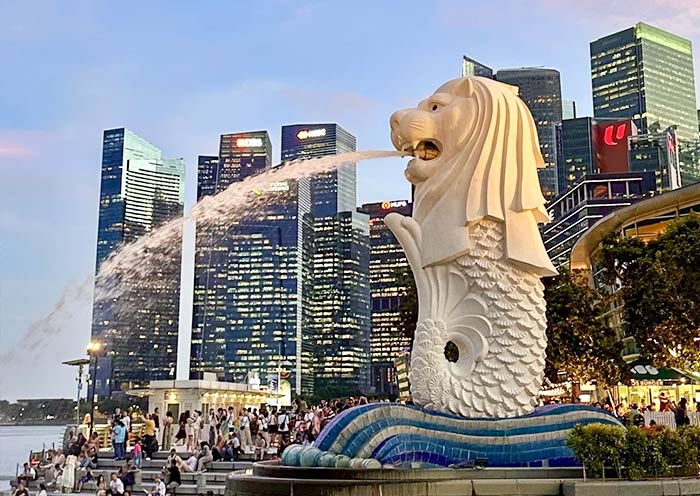



After breakfast, let’s experience Sentosa! Begin your adventure with a ride on the Singapore Cable Car from Mount Faber Park (a great spot for a bird’s-eye view of Singapore). Soar above breathtaking views of Resorts World Sentosa, Adventure Cove, lush jungle landscapes, and the stunning coastline.
Next, it’s time to explore Universal Studios Singapore, Southeast Asia's premier Hollywood Movie Theme Park. Spanning just 20 hectares, it is one of the smallest Universal Studios parks globally. Despite its size, its compact layout allows you to fully experience various attractions and shows within a limited timeframe. Plus, it’s more affordable than its larger counterparts.
Explore 7 Themed Zones at the park: Hollywood, New York, Sci-Fi City, Ancient Egypt, The Lost World, Far Far Away, and Madagascar. Brace yourself for heart-pounding rides, captivating shows, and immersive experiences based on your favorite blockbuster films and television series. The park prioritizes family-friendly experiences and iconic intellectual properties (IPs) such as "Transformers", "Jurassic Park", and "Minion Park."
In Illumination’s Minion Land, step into the world of Despicable Me by exploring the Minion Marketplace, Gru’s Neighborhood, and Super Silly Fun Land!
Notably, the park features:
- 18 attractions designed exclusively for Singapore, including the world’s tallest dual-rail roller coaster standing 5 meters tall.
- A Future World arenaseating 3,500 spectators.
- The Transformers-themed attraction, which combines 4D cinema and roller coaster effects.
After Universal Studios, head to the S.E.A. Aquarium, one of Asia’s largest aquariums, focusing on showcasing global marine ecosystems and endangered species conservation. Dive into the wonders of the S.E.A. Aquarium:
- Gaze through the world’s largest viewing panel.
- Explore 10 diverse marine zones, such as the Strait of Karimata, Red Sea, and South China Sea, as well as thriving shipwreck habitats.
- Encounter over 100,000 marine creatures, including endangered species like manta raysand Napoleon wrasses.
Discover star species at the aquarium:
- Watch graceful manta raysglide with 5-meter wingspans.
- Admire hammerhead sharkswith their iconic heads.
- Marvel at glowing bioluminescent jellyfish.
- Meet playful bottlenose dolphins, the mysterious giant Pacific octopus, and vibrant coral reefsteeming with colorful tropical fish.
Free Time Activities (Surcharge Payable):
- Free Beach Tram to Sentosa’s Beaches: the beach shuttle operates along Sentosa’s beach areas, providing convenient access to:
- Tanjong Beach: Ideal for families with older kids or those seeking quiet time.
- Palawan Beach: A top pick for families due to its child-friendly facilities and relaxed vibe.
- Siloso Beach: Perfect for teens craving adventure, especially when paired with a visit to Universal Studios or Adventure Cove.
Enjoy sunbathing, water sports, and vibrant beach clubs.
- Wings of Time Fireworks Symphony at Siloso Beach (7:40 PM and 8:40 PM daily; self-pay)
This is the only daily fireworks show in Singapore and one of Sentosa’s most breathtaking attractions. It combines water, lasers, fire, and music to create a mesmerizing night show about friendship and courage.




After breakfast, it is time to end your 4 Days Singapore Tour. You will have some free time in Singapore to explore more on your own pace till your driver escorts you to the airport for your flight to next destination.
Extension Ideas:
Planning to visit Malaysia or Indonesia, the neighboring countries of Singapore? Let us know, and we'll customize your itinerary and help with travel arrangements.


Price: What’s Included & What’s Excluded
What's Included:
What's Excluded:
Important Travel Tips for Visiting Southeast Asia
Visa requirements vary depending on your nationality and the length of your stay. It's important to check the specific requirements for each country you plan to visit well in advance of your trip. You can usually find this information on the embassy or consulate website of the country you're visiting.
Dry season (November to April): This is the peak tourist season for Southeast Asia as a whole, with the most consistent sunshine and comfortable temperatures. Ideal for beach lovers and those who want to avoid the rain. This is also a great time for trekking and other outdoor activities.
Average temperatures during Dry Season in Southeast Asia:
- Vietnam: 77°F - 86°F (25°C - 30°C): It can be slightly cooler in the northern mountains during December and January.
- Thailand: 82°F - 90°F (28°C - 32°C): Eastern and southern Thailand, including popular beach destinations, tend to be a few degrees warmer than the north.
- Laos: 75°F - 88°F (24°C - 31°C): Keep in mind that the mountainous areas of Laos can get chilly at night, especially in December and January.
- Cambodia: 84°F - 93°F (29°C - 34°C): Temperatures can get quite hot, especially from March to May, in Siem Reap (Angkor Wat).
The currency varies from country to country. In Vietnam, the currency is the Vietnamese đồng (VND). In Thailand, it's the Thai baht (THB). In Laos, it's the Lao kip (LAK). And in Cambodia, it's the Cambodian riel (KHR). However, US dollars are widely accepted in most tourist areas.
- Dress modestly: When visiting temples, pagodas, or other religious sites, it's important to dress modestly and respectfully. This means covering your shoulders and knees.
- Removing shoes: In many temples, it is customary to remove your shoes before entering. Look for a pile of shoes at the entrance as a cue to do the same.
- Bargaining: Bargaining is a common practice in Southeast Asia countries’ markets and street stalls. However, it's important to do so respectfully and with a friendly attitude. Remember that the aim is to reach a mutually agreed-upon price, not to aggressively drive the price down.
Looking for more travel guides about Southeast Asia countries? Want to gather additional information to plan your trip? Our team of professional travel experts has written over 100 articles about Vietnam Thailand Cambodia Laos. Please check out our Southeast Asia Travel Guide for inspiration and detailed insights.
Hotel Conditions for Your Southeast Asia Tour
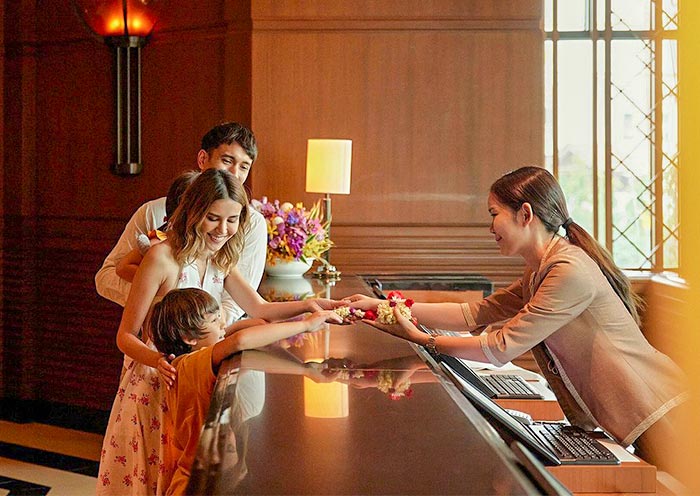


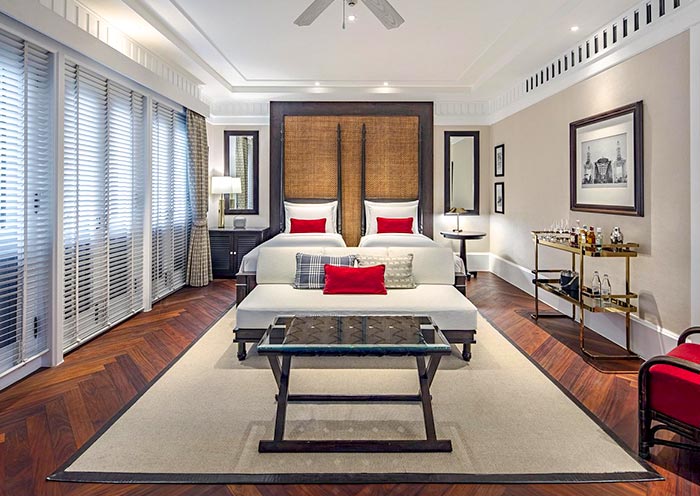
No matter whether you combine 2 or 3 countries, or visit all 4 countries in Southeast Asia, there are many different hotel styles and types to choose from. Travelers typically spend 7-9 nights in Vietnam, 6-9 nights in Thailand, and 2-3 nights each in Cambodia and Laos.
To cater to diverse traveler preferences and budgets, we offer a curated selection of accommodations. Our options include luxurious 5-star hotels, comfortable 4-star options, and economical 3-star establishments. All our selected hotels are conveniently located near city centers or popular tourist spots.
Find your perfect hotel for a great Southeast Asian experience! Our knowledgeable travel experts can provide you with various pricing options based on different hotels. Whether you seek a luxurious stay or have specific preferences, our experts will assist you in choosing the best option that suits your needs.
Photo Gallery for This Itinerary
Latest Southeast Asia Tours Reviews from Our Customers

Jan Woolley
USA
Date of Experience: Apr 26, 2024
Tour Customized by: Tony
You May be Interested in This Tour: Customized Tour

Emma
Singapore
Destination(s): Other
Date of Experience: Sep 14, 2023
Tour Customized by: Owen
You May be Interested in This Tour: Customized Tour

Arizona
Australia
Destination(s): Other
Date of Experience: Sep 04, 2023
Tour Customized by: Teresa
You May be Interested in This Tour: Customized Tour
Price: request
(Based on a private tour for two people. Price varies depending on program, travel date, number of people.)
Free Enquiry! You don’t need to pay for the reservation.
- United States (+1)
- Australia (+61)
- Singapore (+65)
- Malaysia (+60)
- Philippines (+63)
- Canada (+1)
- Italy (+39)
- Indonesia (+62)
- United Kingdom (+44)
- Spain (+34)
- Mexico (+52)
- Hong Kong (+852)
- Thailand (+66)
- United Arab Emirates (+971)
- New Zealand (+64)
- South Africa (+27)
- Germany (+49)
- Brazil (+55)
- India (+91)
- France (+33)
- Vietnam (+84)
- The Netherlands (+31)
- Saudi Arabia (+966)
- Ireland (+353)
- Argentina (+54)
- Switzerland (+41)
- Romania (+40)
- Pakistan (+92)
- Japan (+81)
- Portugal (+351)
- Bangladesh (+880)
- South Korea (+82)
- Puerto Rico (+1)
- Türkiye (+90)
- China (+86)
- Belgium (+32)
- Qatar (+974)
- Greece (+30)
- Taiwan (+886)
- Austria (+43)
- Poland (+48)
- Israel (+972)
- Chile (+56)
- Sri Lanka (+94)
- Nigeria (+234)
- Peru (+51)
- Colombia (+57)
- Hungary (+36)
- Nepal (+977)
- Denmark (+45)
- Bulgaria (+359)
- Norway (+47)
- Slovenia (+383)
- Sweden (+46)
- Kuwait (+965)
- Costa Rica (+506)
- Ecuador (+593)
- Venezuela (+58)
- Malta (+356)
- Croatia (+385)
- Tunisia (+216)
- Czechia (+420)
- Mongolia (+976)
- Bahrain (+973)
- Mauritius (+230)
- Papua New Guinea (+675)
- Cambodia (+855)
- Dominican Republic (+1)
- Luxembourg (+352)
- Finland (+358)
- Guatemala (+502)
- Myanmar (+95)
- Maldives (+960)
- Slovakia (+421)
- Laos (+856)
- Serbia (+381)
- Brunei (+673)
- Oman (+968)
- Macao (+853)
- Panama (+507)
- Morocco (+212)
- Jordan (+962)
- Georgia (+995)
- Fiji (+679)
- Bolivia (+591)
- Lithuania (+370)
- Bahamas (+1)
- Cyprus (+357)
- Latvia (+371)
- Bhutan (+975)
- Iraq (+964)
- Iran (+98)
- Kenya (+254)
- Jamaica (+1)
- Zimbabwe (+263)
- Azerbaijan (+994)
- Uruguay (+598)
- Estonia (+372)
- Andorra (+376)
- Cameroon (+237)
- Ghana (+233)
- Kazakhstan (+7)
- Nicaragua (+505)
- Egypt (+20)
- Russia (+7)
- Albania (+355)
- Réunion (+262)
- Montenegro (+382)
- Algeria (+213)
- Afghanistan (+93)
- Martinique (+596)
- Uganda (+256)
- Honduras (+504)
- North Macedonia (+389)
- Trinidad and Tobago (+1)
- Suriname (+597)
- Antigua and Barbuda (+1)
- Zambia (+260)
- Ukraine (+380)
- Armenia (+374)
- Barbados (+1)
- Belarus (+375)
- Palestine (+970)
- Lesotho (+266)
- Moldova (+373)
- Ethiopia (+251)
- French Polynesia (+689)
- Gambia (+220)
- Guam (+1)
- Gibraltar (+350)
- Isle of Man (+44)
- New Caledonia (+687)
- El Salvador (+503)
- Comoros (+269)
- Seychelles (+248)
- Chad (+235)
- Samoa (+685)
- Cook Islands (+682)
- Palau (+680)
- Paraguay (+595)
- DR Congo (+243)
- Solomon Islands (+677)







